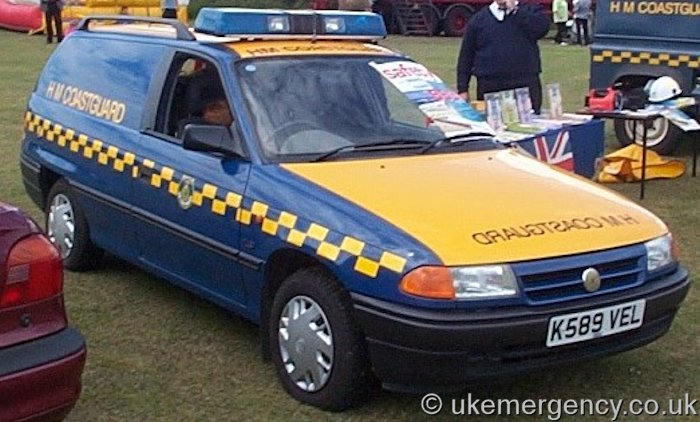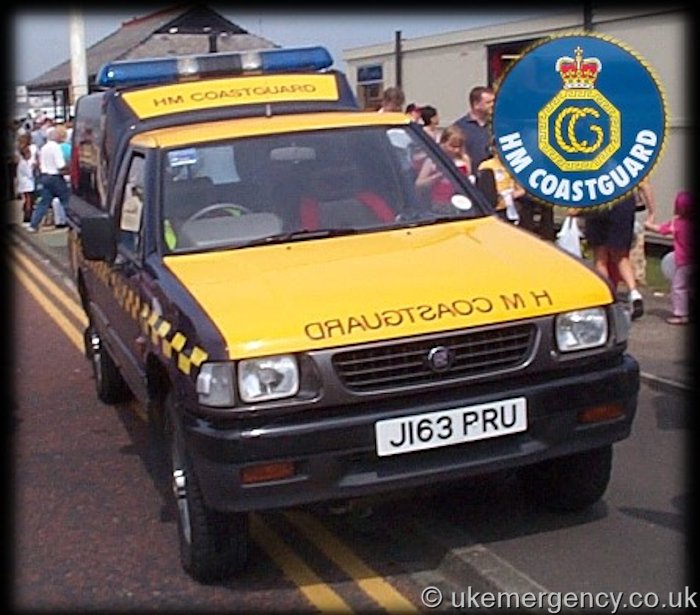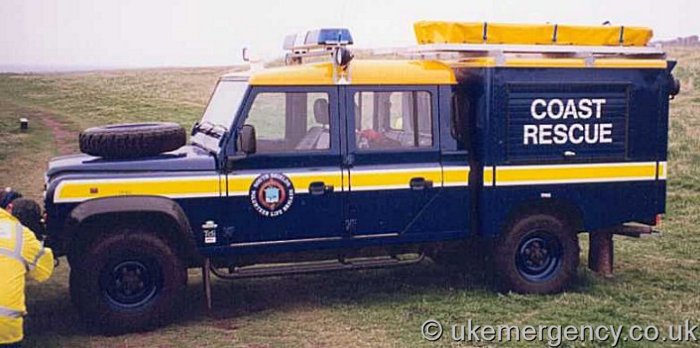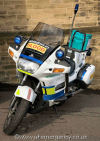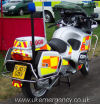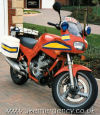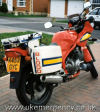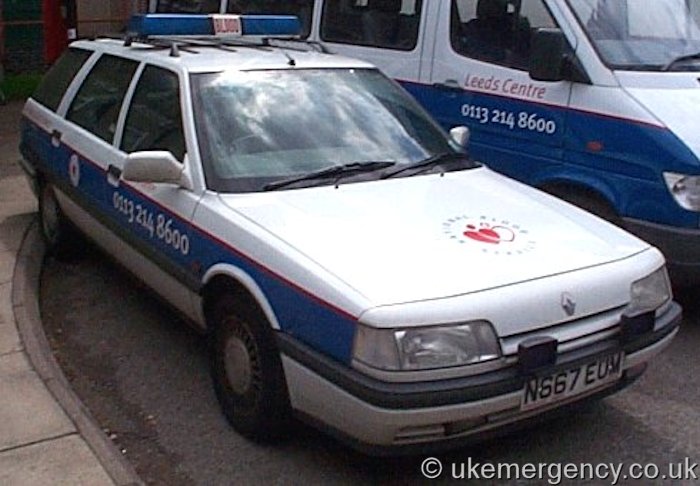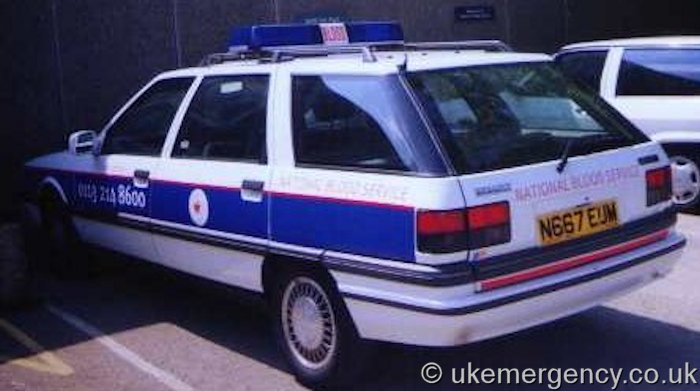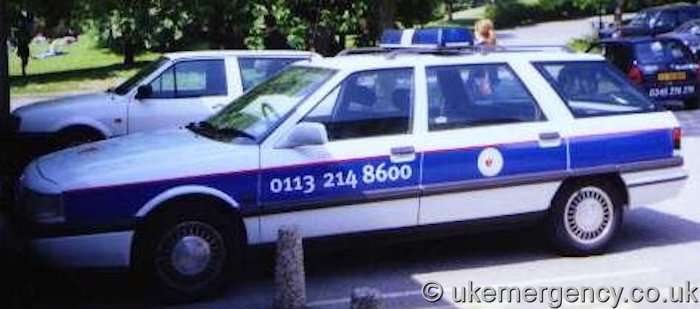Author: ukemergency
G925 MTV This image shows a vehicle belonging to …
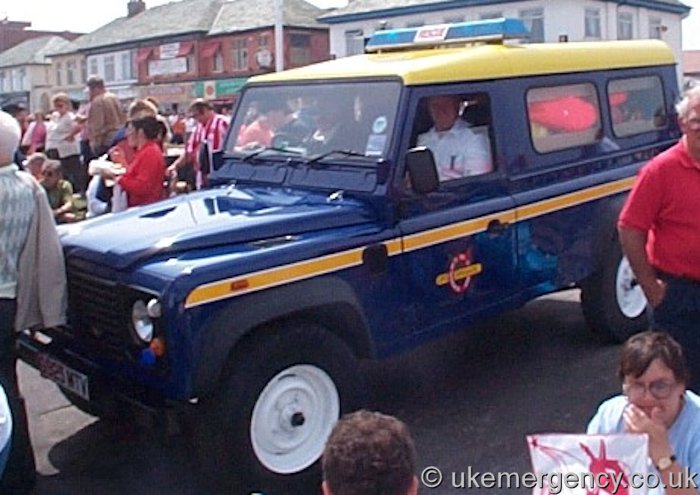
G925 MTV This image shows a vehicle belonging to Sunderland Volunteer Life Brigade. They are a coastguard declared facility providing coastal search and cliff rescue capabilities between Sunderland and South Shields and are not, as is commonly misunderstood, lifeguards.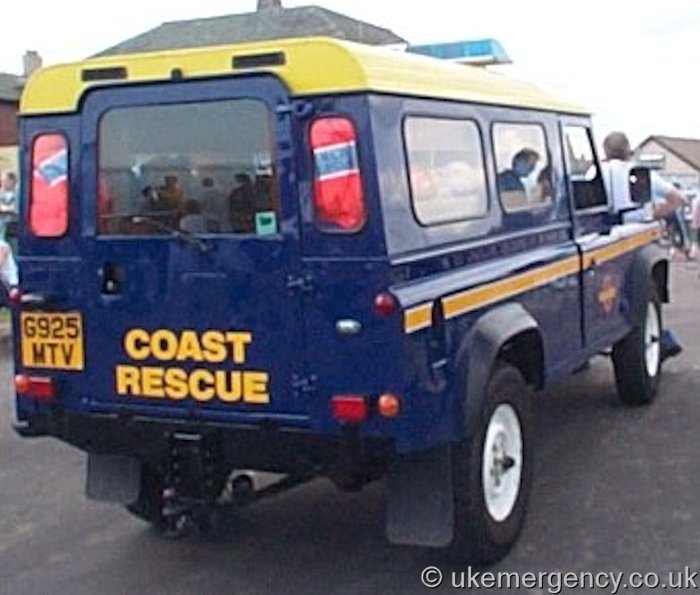
A second view of the Land Rover.
FJ05 EPP This Iveco Daily is operated by the Derbyshire …

FJ05 EPP This Iveco Daily is operated by the Derbyshire Cave Rescue Organisation. The organisation provides underground rescue support to police forces in Bedfordshire, Cambridgeshire, Cheshire, Derbyshire, Greater Manchester, Leicestershire, Lincolnshire, Norfolk, Northamptonshire, Nottinghamshire, South Yorkshire, Staffordshire and Warwickshire.
The rear view of the vehicle showing the equipment storage area. The vehicle is based at DCRO’s main base to the rear of Buxton Fire Station.
S263 LUB, W807 FEC and L402 LNW Left to right are CRO3, CRO2 and CRO1…

S263 LUB, W807 FEC and L402 LNW Left to right are CRO3, CRO2 and CRO1. These three Land Rovers show the line-up of blue-light response vehicles at the CRO’s Clapham base in January 2006. The organisation assists with cave rescues, mountain rescues, search and rescues and other similar tasks. They are called out by the police or ambulance service.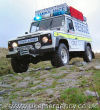
A closer look at the front of the Land Rover CRO2. Large bold wording is used on the front grille, roofrack and sides to show the use of the vehicle. A full blue light bar and alternately flashing headlights indicate when the vehicle is being used to respond to an emergency. These are complemented by a blue rotating beacon on the rear.
The rear view. The red ramps on the roofrack are for placing under the wheels on difficult terrain. However, the Land Rover can already cope very well with almost any obstacle to get equipment and people to a remote location.
This is a Mitchell 28 Sea Warrior called Ebor …

This is a Mitchell 28 Sea Warrior called Ebor Light II and is based at Naburn marina, near York, North Yorkshire. British Waterways have fitted a blue light bar to the roof of the cabin to warn other mariners when they are assisting in an emergency call.
The stern view. British Waterways used patrol boats to uphold laws and by-laws on inland waterways. In 2012 they became the Canal and Rivers Trust.
AB 36 AB This DAF truck is used by the …

AB 36 AB This DAF truck is used by the Royal Air Force as a Bomb Disposal vehicle. In the same way as Royal Logistics’ vehicles, the bomb disposal signs can be hidden to disguise the identity and use of the vehicle. It is fitted with blue flashing lights on the front, sides and front and rear of the roof.
The rear view of the RAF bomb disposal vehicle. These vehicles often have to travel long distances on blue lights and they are dispersed thinly across the country and used relatively infrequently.
LV02 HTF is a Mercedes Benz Sprinter conversion …

LV02 HTF is a Mercedes Benz Sprinter conversion that is used by the Met Police in London. It is part of SO15, the Counter Terrorism Command, and is used for ordnance disposal work. The Met police are the only force in the UK to have their own bomb disposal teams.
Y447 HGU The rear view of an identical but older Sprinter. You can see the roof-mounted antennae and rear-facing blue light bar. The right-hand door actually folds down and is a ramp (see inset). This allows the remote-controlled robot to be readily deployed.
40 RN 50 is a Pinzgauer 6-wheeled truck that …
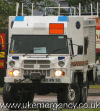
40 RN 50 is a Pinzgauer 6-wheeled truck that the Royal Navy use for bomb disposal work. It is decked out with blue flashing lights and has a side-stripe of blue and yellow checkers.
The rear view of the same vehicle. Notice the lockers on the sides and the very small rear access door. Fold-down orange signs indicate when the vehicle is carrying anything dangerous.
OU02 FYK and OU02 KWA are a pair of bomb disposal …

OU02 FYK and OU02 KWA are a pair of bomb disposal Honda ST1100 Pan Europeans. They carry a simple colour scheme and do not have any writing or crests on them. This is to help stop the public panicking and to help avoid them becoming a target themselves. Notice that one bike has LED lights on the front whereas the other has halogens.
The rear view of the pair of Honda motorbikes showing the high visibility stripes and red flashing lights.
39 RN 88 This Pinzgauer 6×6 is a Royal Navy bomb …

39 RN 88 This Pinzgauer 6×6 is a Royal Navy bomb disposal truck. It has four blue lights on the front, as well as additional spot lamps. On the roof is an upturned rigid inflatable boat. It has a front-mounted winch and ‘flip-down’ signs on all sides to indicate when it is carrying explosives. A supporting RN Land Rover can be seen behind.
SW04 CNX This DAF LF 45.220 truck has blue lights …

SW04 CNX This DAF LF 45.220 truck has blue lights and a yellow stripe, but no other markings. Notice how the front registration plate has been moved up onto the bonnet and has two small blue lights to either side of it.
The rear view of the same 2004 truck. It has fold-down signs on the sides and back to reveal its use – Royal Logistics Corps Bomb Disposal. A piece of white plastic also hides wording on the front.
This is the same vehicle with the signs in the downward position, revealing its use.
R745 UCH This is an older 1998 Leyland DAF …

R745 UCH This is an older 1998 Leyland DAF in the RLC markings. It has blue lights and a siren mounted on top of the cab, as well as blues on the front. A ladder permits access to the roof.
The rear view, showing a blue light in each corner. The back also has a slightly different stripe – the border colour is red, not blue. These vehicles are used for carrying bomb disposal equipment for EOD (Explosive Ordnance Disposal) emergencies.
FC 00 AA This Royal Air Force bomb disposal …

FC 00 AA This Royal Air Force bomb disposal unit is a Leyland DAF truck. Notice the grilles on roof-mounted blue lights and siren. Due to the severity of bomb incidents, the RAF are permitted to use blue lights and sirens.
The front view. Usually only seen on TV news programmes, these bomb disposal units are very few in number and it is not unusual for them to travel for over an hour to get to an incident scene.
In the back of the truck is a large array of equipment, including a robot. Probably the oddest emergency vehicle on UKev, this robot can remotely pick up and move objects without risking human life. On-board cameras ensure the operators can see exactly what it is doing.
This is a RAF bomb disposal Scimitar CVR(T) armoured …

This is a RAF bomb disposal Scimitar CVR(T) armoured personnel carrier (tank). The CVR(T) stands for Combat Vehicle Reconnaissance (Tracked). It has a top speed of 70 mph on tarmac and is powered by a Jaguar V12 engine. This is used to protect the lives of the disposal experts as they deal with unexploded munitions dropped onto an airfield from a safe distance. It carries its own military registration plate.
Another view of the Leyland bomb disposal truck. The Met have 4 full time bomb disposal officers all civilians with the honorary rank of Superintendent and all are ex army bomb disposal officers. They all have police officers as drivers and have a fleet of 3 specially equipped Range Rovers which they use as rapid response vehicles. They also have several other specialist vehicles including 2 adapted Mercedes Sprinter box vans which they use to transport their “wheelbarrow” remote control bomb disposal machines. They are based at a Central London Location (not the yard) and respond to all suspect packages / devices around the Met. The only time the army are used in the Met area is when any WW2 ordnance is found where it takes a long time to deal with and the police bomb disposal units would be tied up for too long reducing their ability to respond to other incidents.
This is a picture of a Royal Navy EOD Land Rover…

This is a picture of a Royal Navy EOD Land Rover. It is based at Faslane, Scotland and is part of the Northern Diving Group Explosive Ordnance Disposal Team. This is the new livery, previously the colour was blue. The pictures were taken on a beach in Cumbria whilst the team were dealing with an item which had been discovered by the local Coastguard.
A second view of the RN Land Rover.
KL07 LZT This Ford Mondeo estate is used by Amvale …

KL07 LZT This Ford Mondeo estate is used by Amvale Medical based in Scunthorpe. They have contracts with NHS hospitals to transport organs as well as taking teams of surgeons to other hospitals. It is fitted with a blue light bar on the roof and is classed as an ambulance.
The rear view of the Mondeo, showing the transplant logo on the rear portion.
This Honda ST1300P is used by Freewheelers, a charitable …
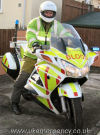
This Honda ST1300P is used by Freewheelers, a charitable medical transportation service. The bike is used to transport human blood and any other small medical items that are required by hospitals. The blue light are only used in exceptional circumstances when human life is at stake.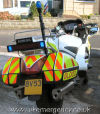
The rear view of the 53-reg bike. The registration has been partially disguised here.
WX53 ZLY Here is a 55-registration …

WX53 ZLY Here is a 55-registration Ford Transit Connect and a 53-registration DAF truck both belonging to the National Blood Service. They both carry the same livery of a wide red stripe. The truck is a ‘bloodmobile’ which allows people to donate blood in a mobile hospital-style environment. The Transit Connect is used to carry around supplies of blood and related paraphernalia.
The rear view of the Ford Transit Connect. It carries a full-width light bar at the front of the roof and has two repeater blue lights at the rear of the roof. The Road Traffic Act permits the NBS to use blue flashing lights when an urgent request comes in from a hospital. However they cannot break the speed limit when using them which can sometimes appear unusual to following drivers.
RO04 EWA This Honda Pan European 1300 is …

RO04 EWA This Honda Pan European 1300 is the second marked vehicle to be used by SERV (Service by Emergency Rider Volunteers). This volunteer organisation delivers blood products to hospitals across Southern England at night, when NHS services are limited. It carries ‘blood’ wording and blue flashing lights.
GP05 MVS This is a Honda Deauville belonging to …
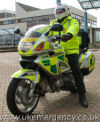
GP05 MVS This is a Honda Deauville belonging to SERV. It has green and yellow checker markings and clear ‘blood’ wording. There are no emergency warning lights.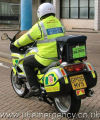
The rear view of the Deauville in use. The National Blood Service box is securely attached behind the rider. You can see that there are lots of ’emergency blood’ signs, and the SERV logo has also been added to the panniers.
MX03 GUF This Ford Focus TDCi estate is used …

MX03 GUF This Ford Focus TDCi estate is used for the urgent transportation of blood by the National Blood Service.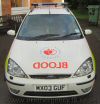
The front view. Notice the slim blue light bar and the blue strobe light next to the rear view mirror. You can also see the roof markings stating ‘urgent blood’.
The side view of the same car. The NBS originally had a wide blue stripe down the sides of their vehicles (both emergency, and non-emergency), examples of which can be seen in other blood service pages. More recently, they have adopted a (very appropriate) wide red stripe. This rapid deployment vehicle has a third livery of red and yellow battenburg, which is similar in appearance to some fire service cars.
The rear and nearside views. The ‘phone number, website address and ‘NHS’ logo can all be seen.

